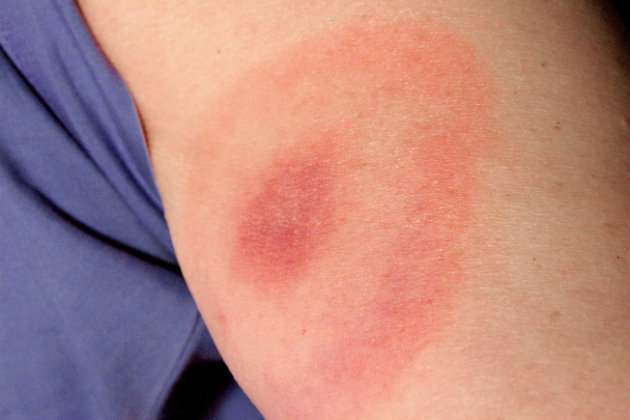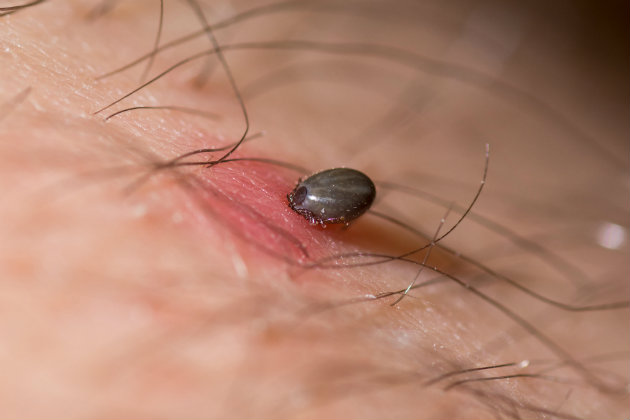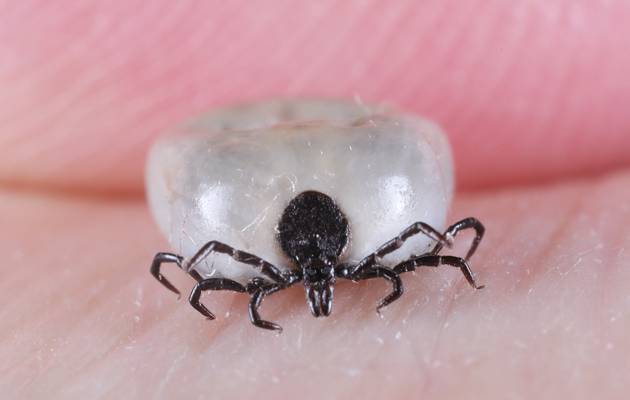Win CENS ProFlex DX5 earplugs worth £1,149 – enter here
Lyme disease symptoms – what you need to know

A growing prevalence of tick-borne diseases – including Lyme disease – has put them high on the list of public enemies. Unfortunately, ticks now pose a direct threat to humans, and the problem is on the rise.
Spread to England from the USA
Lyme disease is caused by an infection of Borrelia bacteria, a large family of micro-organisms responsible for a range of unpleasant illnesses. Twelve species of Borrelia can cause Lyme disease, and DNA evidence suggests that the illness has been around for decades. The first confirmed case was formally identified in Lyme, Connecticut, in 1975 (hence the name), and the disease was found in Britain two years later.
Lyme disease has become steadily more prominent over the past 30 years, though it is incredibly hard to provide any definitive figures for this increase. Public Health England confirmed 300 cases in 2005, but this had risen steeply to 1,000 in 2015. Scientists believe that the number of confirmed cases falls far short of the reality, and the real number may be as many as 3,000 new cases occurring in the UK each year.

Ticks like warm dark areas on the body
Lyme disease isn’t easy to spot
When we think of ticks, we tend to think of the great big adults found on deer or livestock, but the disease is easily transmitted by younger ticks in the larval or nymph stages.
- Young ticks are tiny and can be easily missed if they crawl into a hard-to-reach spot.
- Some people who suffer from Lyme disease have no idea that they had ever been bitten by a tick, and the first signs of the illness are even harder to spot without any context.
- There are a number of symptoms, but they are generally inconsistent and affect different people in different ways.
- There is often a long delay between the bite and the first symptoms, leading many GPs to overlook any possible links.
- The first sign of infection is usually a red “bull’s-eye” rash around the site of the bite mark, but this may take weeks to appear and it may never appear at all.
A sufferer was bedridden for three weeks
Gundog trainer Dan Higgs is based near Melton Mowbray and was bitten by a tick in Inverness-shire three years ago. He did not notice any rash or bull’s-eye mark, but was suddenly stricken with flu-like symptoms around six weeks later. He told his doctor that he had been bitten by a tick, but blood tests failed to confirm the disease. Borrelia bacteria are hard to pin down, and even laboratory tests can struggle to provide concrete evidence of infection. It was only in subsequent tests that his diagnosis was confirmed, and Dan embarked on a course of heavy-duty antibiotics that left him in bed for almost three weeks. Dan has come through the disease, but he realises how important it is to get medical help quickly when symptoms strike.
What’s the treatment?
There is no definitive treatment for Lyme disease, but doctors agree that antibiotics can provide the best results while researchers continue to work towards a better option. Unfortunately, the fact that it is currently so rare means that few doctors have direct experience with the disease and there are no NHS specialists.

Deer stalkers are vulnerable to ticks because they carawl through long vegetation in the summer months
Lyme disease can cause irreversible damage
A Hebridean deer stalker I spoke to was bitten by a tick in 1998. Suffering for several months with chronic aches, headaches and muscle pains, he recognised his symptoms in a Game & Wildlife Conservation Trust magazine article about Lyme disease and took it to his doctor. Progress towards a final diagnosis was so slow that the stalker has suffered permanent and irreversible damage. Despite determined resistance, he has been left with partial hearing loss, poor concentration and chronic fatigue. The disease even contributed to a minor heart attack. Fortunately, we are much better at recognising the signs of Lyme disease today, but the value of quick diagnosis and treatment cannot be overstated.
Particular concern for deer stalkers
Deer stalkers are particularly vulnerable to ticks because they crawl through long vegetation in the summer, but while stalkers have a pretty good awareness of the dangers of tick-borne diseases, that knowledge is not shared evenly across the shooting world. Many people have no idea about the dangers of ticks, so it is always worth encouraging others to be on the alert.

Ticks can be removed painlessly and in their entirety with a tick fork, such as the “O Tom”
Where and how to spot ticks on the body
You should check yourself for ticks after every trip out in the countryside at this time of year, focusing particularly on your ankles and armpits. Ticks like a warm, cosy spot where they can enjoy a meal in peace, and they are also likely to home in on your hairline and the ring around your waist where your belt lies. Most ticks are little more than a revolting source of irritation, but scientists now believe that around 2.5 per cent of ticks carry the Borrelia bacteria.
- If you find a tick, remove it and then keep an eye on the bite.
- If you feel unwell or spot the characteristic rash, it is important to head straight to your GP and explain that you have been bitten by a tick.
- Disease transmission itself is slow, so provided that you can remove the tick within 24 hours of it biting, the chances of infection are dramatically reduced.
- By using a tick fork, such as the “O’Tom”, the insects can be twisted off in their entirety without leaving mouth parts in your skin that can not only prolong the window of infection, but can also become infected in their own right.

Ticks can be picked up year round
Ticks can now be found year-round
Unfortunately, a recent trend for mild winters and damp springs has led to a boom in ticks. Ticks used to be exclusively a summer phenomenon, but I have found ticks on my dog in almost every month of the year.
- Summer brings a peak of activity, and there is a range of contributing factors that can influence numbers.
- More ticks are found in damper, rougher ground than in short vegetation, and some parts of Scotland and Wales are renowned for their ticks.
- It is important to remember that ticks know no borders, and it is quite possible to pick up a tick in a city.
Related Articles
Get the latest news delivered direct to your door
Subscribe to Shooting Times & Country
Discover the ultimate companion for field sports enthusiasts with Shooting Times & Country Magazine, the UK’s leading weekly publication that has been at the forefront of shooting culture since 1882. Subscribers gain access to expert tips, comprehensive gear reviews, seasonal advice and a vibrant community of like-minded shooters.
Save on shop price when you subscribe with weekly issues featuring in-depth articles on gundog training, exclusive member offers and access to the digital back issue library. A Shooting Times & Country subscription is more than a magazine, don’t just read about the countryside; immerse yourself in its most authoritative and engaging publication.







